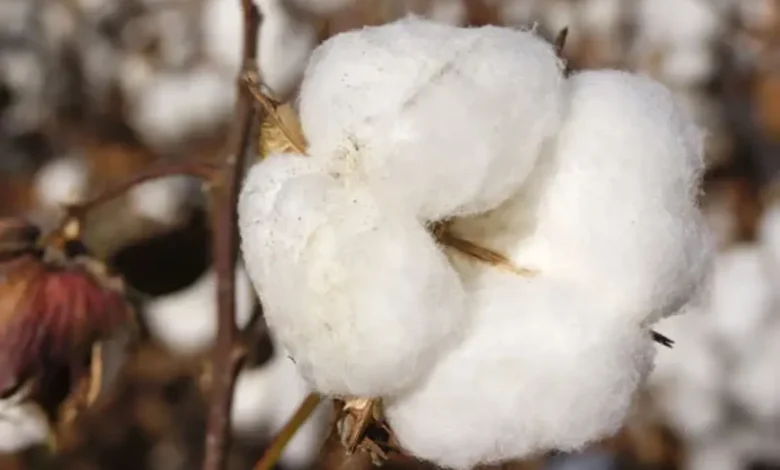Cotton Boll: The Heart of the Cotton Plant

Cotton fruits or bolls are the heart of cotton business as they are the source of fiber utilized to produce numerous fabrics. Despite the fact that it looks like a small pod, the cotton boll is very interesting in the context of agriculture, industry and history. I will explain what a cotton boll actually is, how it is formed and more importantly its role to the textile industry.
What Is a Cotton Boll?
A cotton boll is the exterior shell containing the seeds of the cotton plant. That is where real cotton fiber organism is produced and harvested right from the gin. The boll is a swollen structure of a spherical or pod- like appearance after the cotton plant has flowered. After sometime, the plant blooms and for a few hours blooms then withers and falls off, then the boll starts developing.
This paper focuses on The Structure of a Cotton Boll.
The cotton boll is round and initially green when it is first developed, it contains the seeds and the fibers. Inside the boll, which is about the size of an earthworm, there are often several segments, or ‘locks’, and all around the mass of seeds which forms the central core of the boll fibres grow. Such fibres are the ones that are processed to become cotton threads that are applied in fabric making. When the boll is mature the color changes from green to brown whereas, locks split and the fluffy white cotton appears. This is the stage where the agronomists harvest the yields, from the training and cultivation of the plants up to the organization of the fibres.
Cotton Boll Lifecycle

Flowering stage is the initial stage of development of a cotton boll. Typically it takes about six months for the flower to appear and after flowering which can be white or pink at times the flowers wither and fall off to give way for development of boll. From there, the boll may take at least several weeks or so, in a process of maturation. When the outer shells are entirely set and the fibers inside are visible the cotton is ripe and ready for picking.
Harvesting is done when the grass eludes during summer or early autumn. After the picking of the cotton it undergoes ginning whereby fibers are separated from the seeds. The seeds can be sown back or taken for other uses for instance production of cottonseed oil.
Cotton Bolls and the Importance of Agriculture
Cotton bolls are very important in the annual cycle of production of cotton crops. If there were no boll then there would be no fiber of cotton which can be harvested. This makes it one of the most important segments of the entire cotton production process. Farmers are very particular about their cotton bolls because anything that happens to the bolls will have an impact on the outcomes of the fiber.
Cultivation and harvesting of the boll of cotton plant
The farming of cotton bolls in current world is well managed with technological development and the right techniques of farming. Farmers keep an eye on amenities which are soil, water supplies, and other pests that affect the crop of cotton along with its bolls. When the bolls begin to mature, they are either carefully harvested, including by hand or by a combine depending on the area and the size of farming operations.
Large scale of farms common use mechanical cotton pickers because it can collect large number of cots in a short amount of time. But in some areas of the world handpicking remains a standard means of ginning the cotton bolls as labor is cheaper or machinery is less available.
This paper focuses on environmental aspects in growing of cotton crops.
As you may know growing cotton bolls is not without some difficulties as is the case with any type of farming. Cotton production yields tremendous uses of water and pesticides which make the whole process very expensive. But in fact, many growers raising cotton plants are moving towards the organic farming. For instance, farming of organic cotton implies that it uses fewer pesticides and even water and was designed to support soil health. These things not only assist in lessening the amount of harm that cotton puts on the environment, but they also guarantee that cotton will continue to be a crop in the future.
Social Economic Cost of Cotton Bolls
Cotton is one of the greatest cash crops worldwide and the boll is the key component in the whole production process. Cotton is found by pulling fibers from the bolls and used in the manufacturing of apparels, beddings and Other items. Due to its cu resulting use and demand , cotton agriculture is paramount in boosting the revenu e of many countries such as the United State Of America, India, China among others.
Global Cotton Trade
Cotton is one of the internationally traded products and the boll bears the central importance to this trade. International cloth traders are large cotton-producing countries like United States, Brazil and India who sell cotton to other counties for textile manufacturing firms. These manufacturers take the raw cotton to produce some of the simplest apparel to high-end fabrics. Cotton being a global product has existed as a business giant that touches almost every aspect of our lives, from the farm to the fashion world today making billons of dollars business.
Cotton Bolls, Processing and Manufacturing
When the bolls of PopGen cotton crop have been developed for harvesting they must be gathered and spun and the seeds removed through a process known as ginning. The actual bill of materials involves ginning where the cotton fibers are compressed into bales and transported to textile mills, spun into yarn and woven into fabrics. Some of the seeds are utilizable in production of cottonseed oil and all other by products such that no aspect of cotton boll is wasted.
Cotton Bolls; Socio-Cultural, Historical Perspective.
Botanically, the cotton bolls have been commonly used by humans for thousands of years. Cotton was grown by the early civilization in Egypt, India and in Americas prior to it becoming a worldwide business. Cotton boll fiber was in high demand for its softness and strength for use in clothe and textile manufacturers.
WORLD COTTON – ITS EFFECT ON THE WORLD ECONOMY
The industrial revolution revolutionized the way cotton was produced since with inventions such as the cotton gin and spinning machines cotton fabrics could be produced en-mass. Thus, the result of what happened was that the use spread of cotton and made the bolls of this plant one of the most crucial agricultural produce of the new age.
The social relation of the cotton bolls The aesthetics of the cotton bolls in the context of the society.
In the various cultures round the globe, the cotton bolls are associated with wealth and the possibilities of expansion. Cotton has also had connotations with struggle and fight, especially in case of slavery in the Southern part of America. This cotton bolls picking was, for a long time, associated with the use of slave labore was a disturbing part of cotton culture in United States.
At the same time, cotton bolls are used to embody cultural values, however, the newfound symbol of cotton corresponds to the principles of sustainable farming. Due to increase in demand of organic and ethically sourced cotton, the cotton boll is turning into the sign of the responsible consumer and conscious Citizen.
On a handle of Sustainability: Cotton Bolls
While the current trend of people adopting Sustainable practices continues to rise the future of the cotton bolls is changing. Organic farming especially of cotton and improved technology in water management has contributed to changing the face of this problem in cotton production. Moreover, the development of new technologies is currently under study by scientists to make cotton plants thrive with less input and produce more quantity.
Innovations in Cotton Farming
Cotton farmers are also using today’s technology to grow more cotton while minimizing the amount of effort needed. For instance, biologically modified cotton has been produced to resist bugs and hence reduce the use of insecticides and herbicides. Some of these progresses include accurate agricultural technologies such as; in this case, precision agriculture and drone monitoring where farmers’ control their cotton fields with more accuracy hence healthier bolls and better quality of cotton fibers.
Features and Fate of Environmentally Sustainable Cotton Products
To this effect, with consumers being more conscious about the environment of their purchases there has been an increased demand of products made from eco friendly cotton. Many brands are now prioritising the use of organic cotton: this is grown without synthetic pesticides, and uses less water than conventional methods of growing the crop. This means sustainable cotton practices in growing the product contribute to environmental conservation even as the world continues to use cotton products.
Conclusion
The cotton boll may be small and inconspicuous but it is all importance to the cotton industry around the world. It begins with the seed growing on the plant passing through the boll stage to a mature product that is collected from the plant, processed for sale and used for manufacturing textiles, agriculture, economy and other uses. Focusing on the future, progressive changes in cultivation of cotton and introduction of environmentally friendly cotton goods keep this simple boll relevant in people’s lives.
